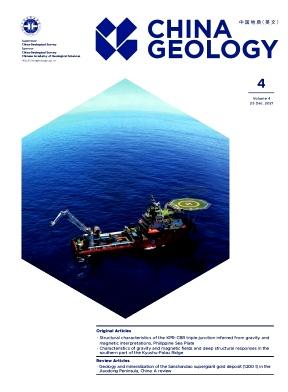Heavy metal pollution in water and soil and associated health risks in a tin mining region of Hunan Province, Central China
IF 4.7
3区 地球科学
Q1 GEOSCIENCES, MULTIDISCIPLINARY
引用次数: 0
Abstract
To assess the effect of mining activity on heavy metal pollution and associated health risks in tin mining regions, water and soil sampling was conducted near a tin mining site in Hunan Province. The content and distribution of heavy metals were determined. Pollution, ecological risks, and potential health hazards were evaluated using the ground accumulation index, potential ecological risk index, and health risk assessment models, respectively. The results indicated elevated levels of heavy metals in water and soil samples compared to acceptable background values. Ground accumulation index assessment revealed extreme pollution of soil with As and Cd and moderate pollution with Cu, Pb, and Zn. Cr and Hg were categorized as non-pollutants. Water samples exhibited extreme pollution levels of Hg, Cr, Cd, and As; moderate pollution levels of Pb; and moderate to high pollution levels of Cu and Zn. The tin mining area demonstrated a significantly high level of potential ecological risk, where As and Cd were the primary risk elements in soil, whereas Cr, Cd, and As contributed predominantly to water ecological risk. The human health risk assessment highlighted As, Cd, Cr, Hg, Pb, and Cu in water and As and Pb in soil as the principal non-carcinogenic factors. The primary carcinogenic factors were As, Cr, and Cd in water and As in soil, with As posing the greatest risk for non-carcinogenic and carcinogenic effects. Furthermore, oral intake was the primary exposure route, with children being particularly vulnerable to the adverse effects of heavy metal pollution.
中国中部湖南省锡矿矿区水和土壤重金属污染及相关健康风险
为了评估采矿活动对锡矿矿区重金属污染和相关健康风险的影响,在湖南省锡矿矿区附近进行了水和土壤采样。测定了土壤中重金属的含量和分布。采用积土指数、潜在生态风险指数和健康风险评价模型,分别对污染、生态风险和潜在健康危害进行评价。结果显示,与可接受的背景值相比,水和土壤样本中的重金属含量有所上升。土壤堆积指数评价结果显示,As、Cd污染严重,Cu、Pb、Zn污染中度。铬和汞被归类为非污染物。水样中汞、铬、镉和砷的污染程度极高;中等污染水平的铅;铜和锌的污染程度中至高。锡矿矿区潜在生态风险水平显著高,土壤中As和Cd是主要的风险元素,而Cr、Cd和As是主要的水生态风险元素。人类健康风险评价强调水中的As、Cd、Cr、Hg、Pb和Cu以及土壤中的As和Pb是主要的非致癌因素。主要致癌因子为水中的砷、铬、镉和土壤中的砷,其中砷对非致癌性和致癌性的风险最大。此外,口服是主要的接触途径,儿童特别容易受到重金属污染的不利影响。
本文章由计算机程序翻译,如有差异,请以英文原文为准。
求助全文
约1分钟内获得全文
求助全文

 求助内容:
求助内容: 应助结果提醒方式:
应助结果提醒方式:


